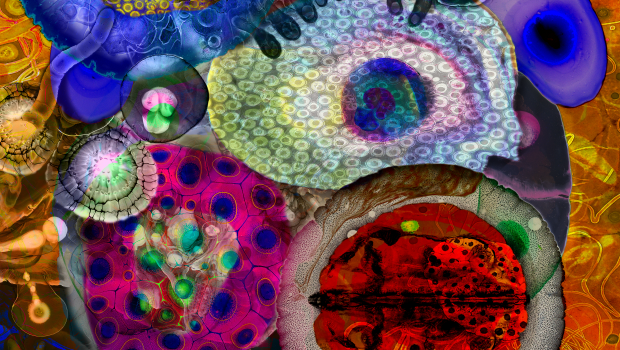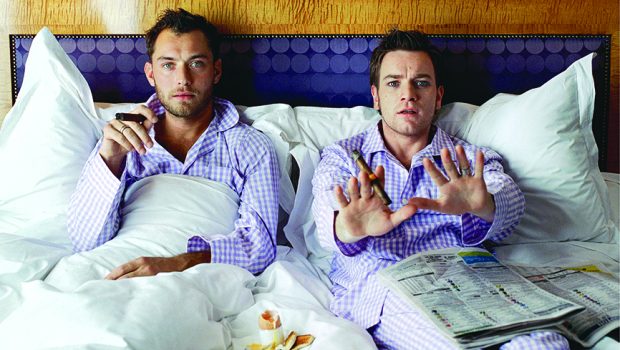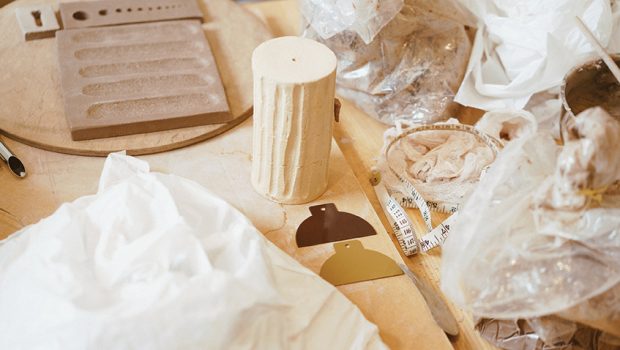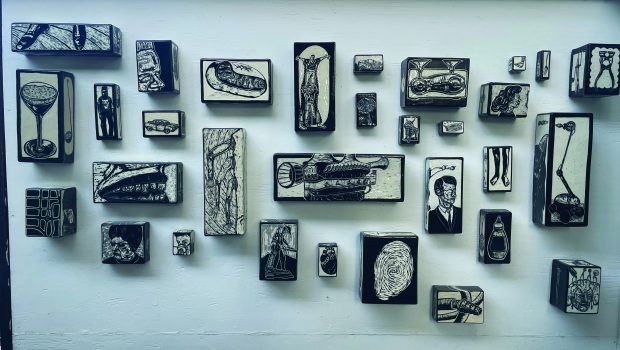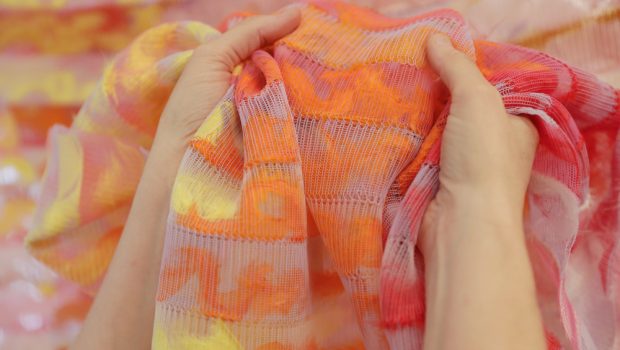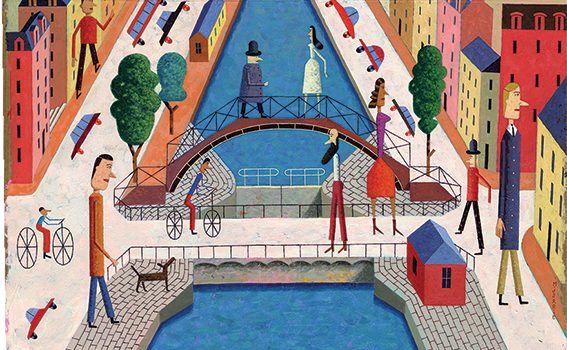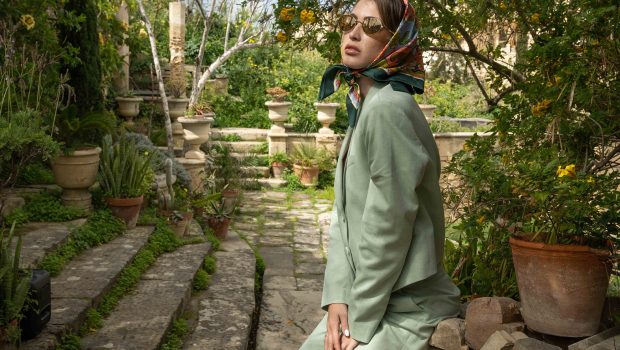Breaking Silence
VAMP has a chat with London abstract and figurative artist Robert Fry. Through his intriguing, poignant and obscured figurative art, Fry conveys human presence, putting the spotlight particularly on men’s mental health.
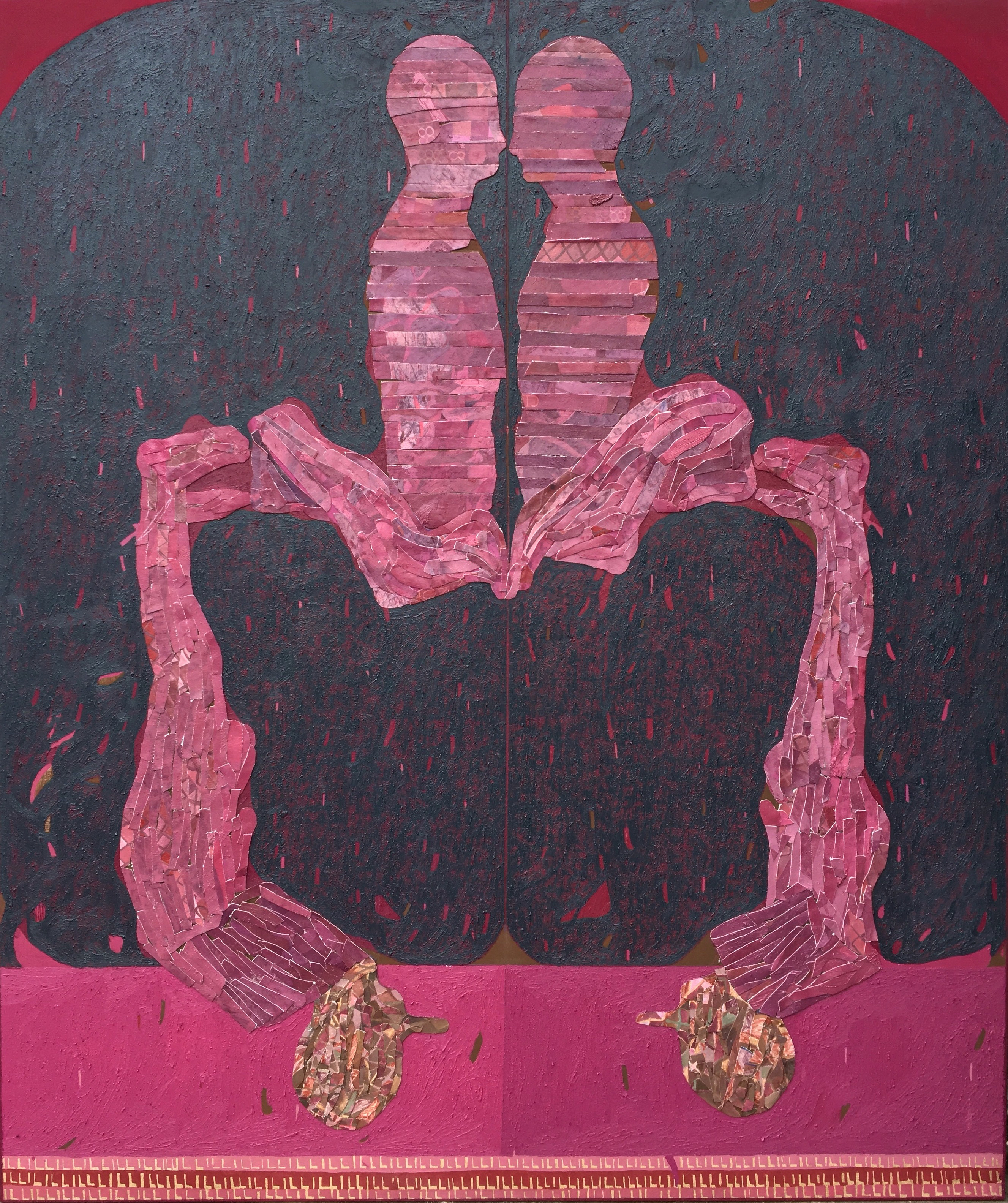
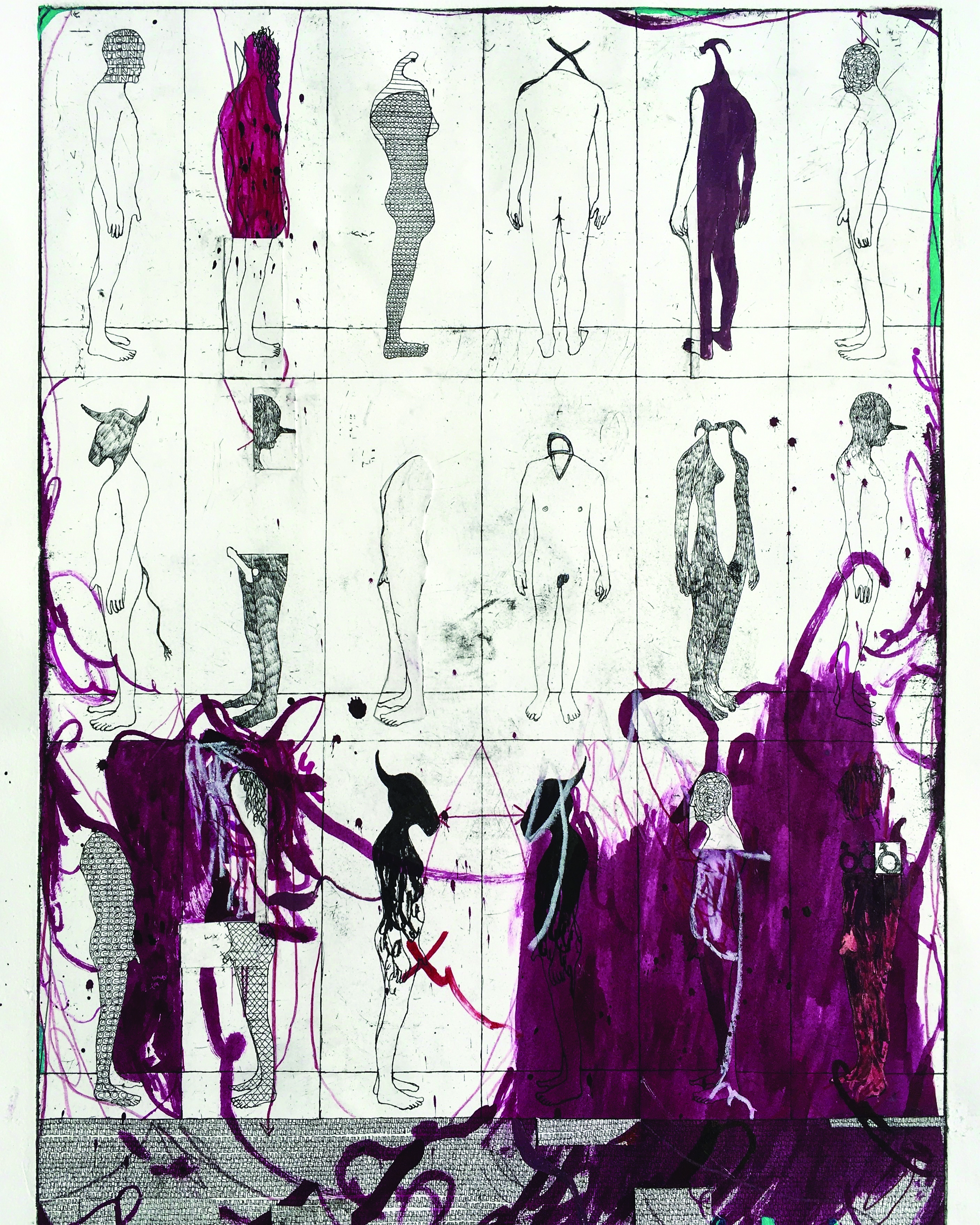
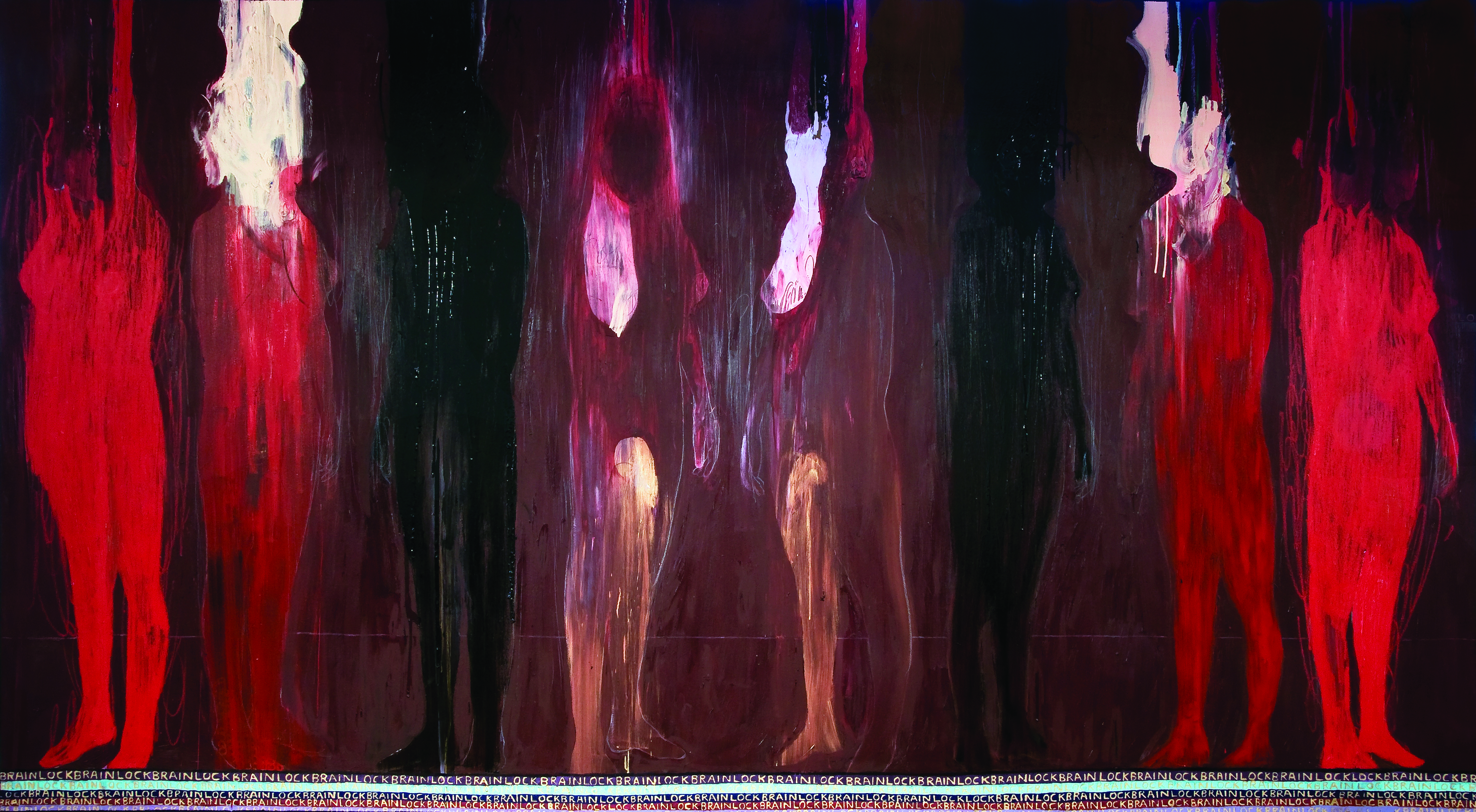
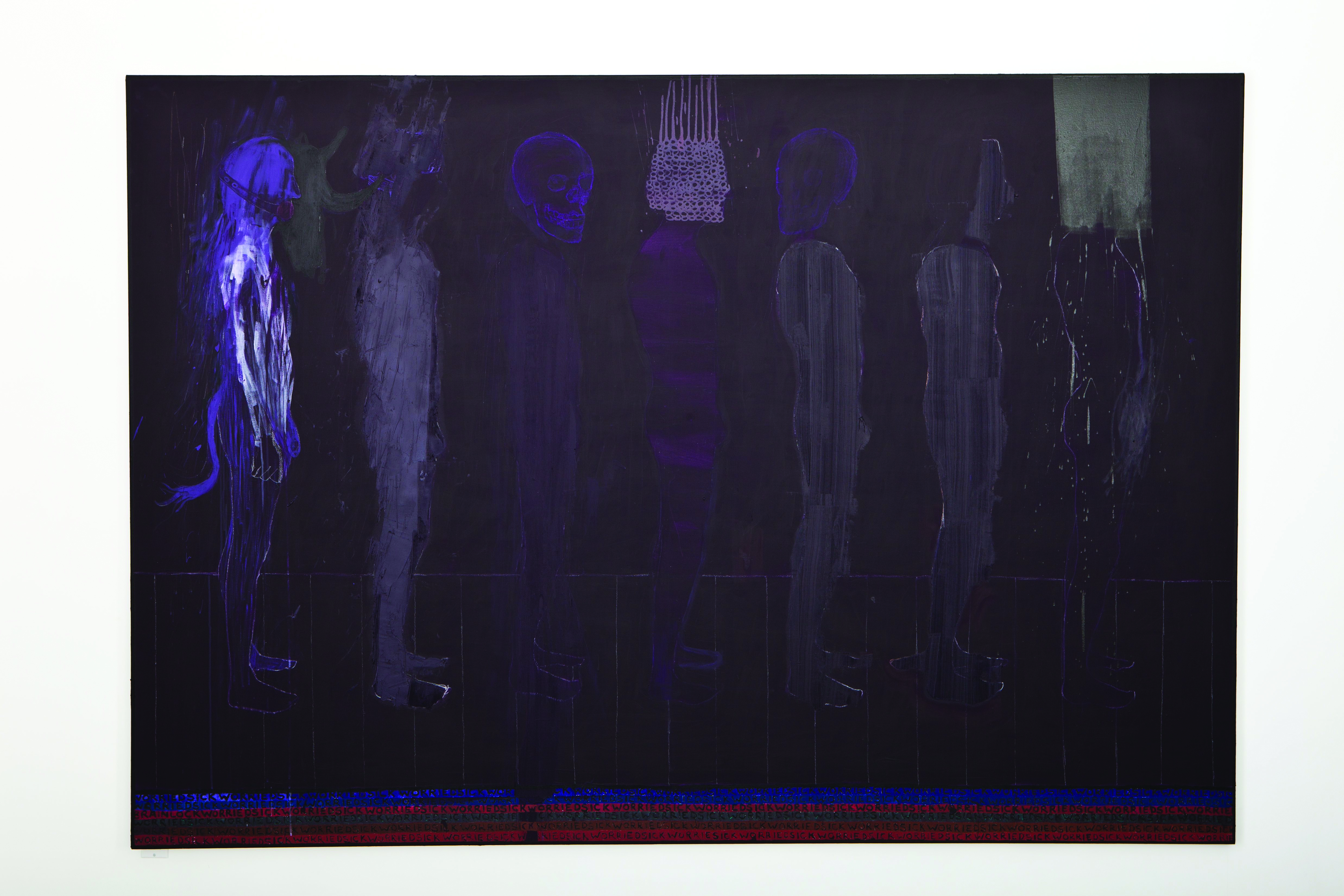
About the paintings featured: The large scale painting ‘Silent Film Study A’ was included in a two person exhibition at Space K, in Seoul, Korea, last year.
The other work is a unique etching which was included in a group exhibition of works on paper at Gallery Kornfeld in Berlin in August last year.
- How would you describe your lifestyle in London?
I spend most days in the studio. In my free time, I go to flee markets, swim and visit museums, where I select just one or two paintings to absorb, rather than trying to take in entire collections.
How has London influenced your art and how has your art had an impact in London?
The intensity of city living has impacted my work hugely – in my paintings there is a focus on anxiety, which I think is partially generated as a result of living in a vast city like London. I can only hope my exhibitions in London have added to the culture of the city, and inspired dialogue around men’s mental health.
What’s your favourite medium? Why?
Painting. It is such a complex medium, in its history and versatility. I am continuously challenged by it, so it never tires me.
How do you provoke emotion and engagement through your art?
I think my painting provides the viewers a different view of themself – this is in itself quite confrontational and provoking. I use painting as a way to turn something inside out.
Your book “Robert Fry” by Jane Neal says that your “paintings and etchings confront viewers with an engaging exploration of the human form that asks profound questions about people’s physical presence in the universe and the psychological, emotional and spiritual engagement we have with the world through our bodies.” How do you achieve this? How does your art address peoples’ physical presence, and spiritual engagement?
I convey physical human presence in my paintings, through partially not conveying it. By consciously obscuring parts of the human form in my paintings I attempt to create space for the viewer to question their preconceived image. So, it is by not conveying parts of the human figure that I seek to create engagement with the viewer.
Do you think that censorship on nudity and intimacy has a role to play in your art and how you present it? What are the challenges around this? How does your art push boundaries and provoke conversation on this topic?
My work centres the crisis of male identity, from an autobiographical and social perspective. I have chosen painting as a medium to engage with this complex subject.
In your visual language do you prefer to express your reflection or the public’s opinion?
My visual language, I hope if anything challenges both my reflection as well as the public opinion.
How would you describe your journey as an artist over the years?
Turbulent; I think as any artist encounters, there are as many moments of fulfilment and there are also collapses in self-confidence.
What projects are you working on for 2019/2020?
In September I will have a solo exhibition ‘Lost Men,‘ with Beers London. And in 2020, I will exhibit with my primary gallery, Gallery Kornfeld, which will consist of works on paper.
What would you tell younger people inspired to invest their time in painting?
I would probably advise them against it!

